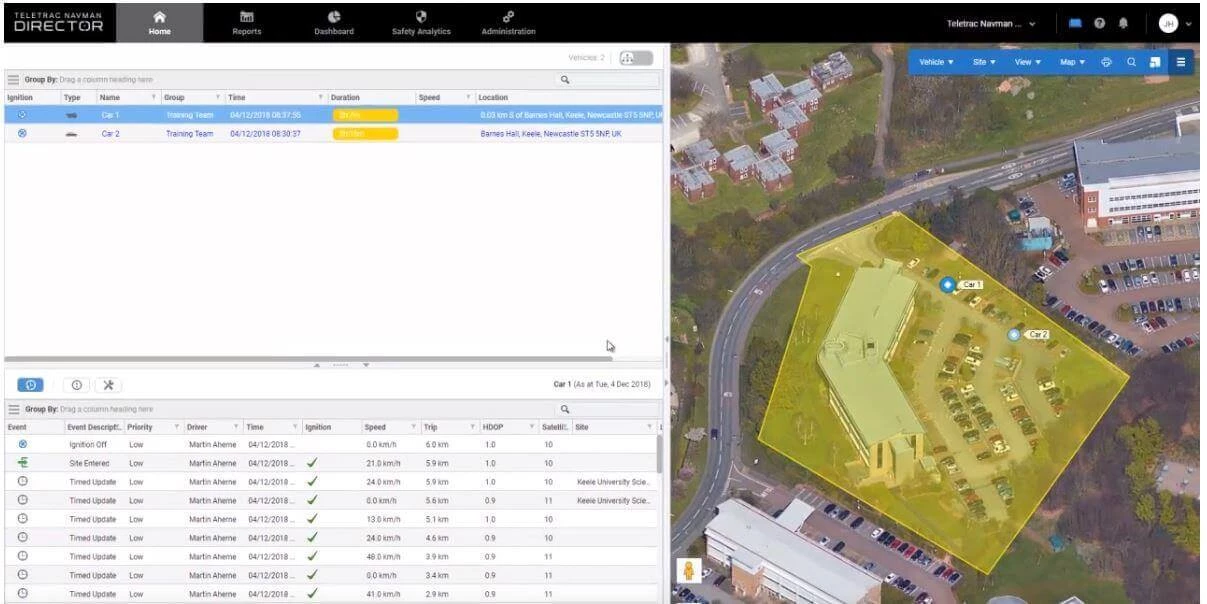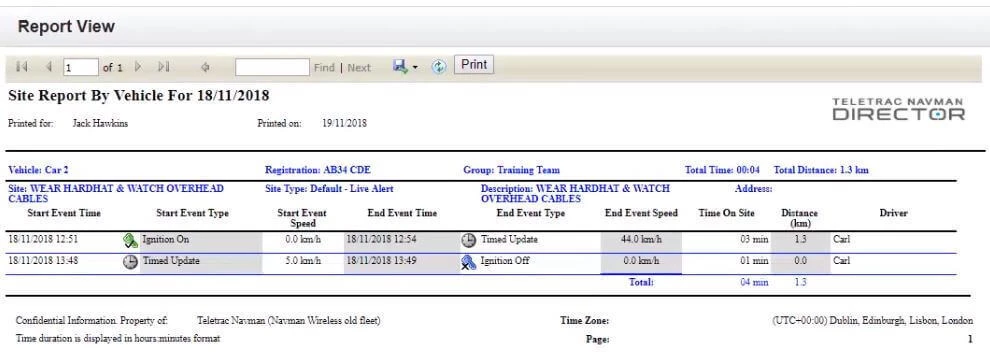Geofencing is a technological advancement in GPS fleet management that can be applied in different ways, for varying purposes. As a basic definition, geofencing is simply the capability to use signals from a device to pinpoint that device’s location (known as geolocation or geotracking) and draw a digital boundary to encircle the area, the fencing part of the word.
How do geofences work? TEST
Geofences can trigger a particular pre-programmed action when a vehicle equipped with a vehicle tracker or RFID tag enters them. This could include triggering text messages or alerts (for example, to a customer to alert them that a delivery is imminent), prompt mobile push notifications, or alert management whenever a vehicle or individual enters or exits a specific area. Geofences could also be set up to instruct an employee to avoid a particular area, providing managers with an alert should they proceed to ignore this instruction.
Geofencing itself is nothing new, although the uses to which it has been put have expanded substantially in more recent times. It is only relatively recently that the technology has become affordable, and hence commonplace, while the proliferation and widespread adoption of smartphone technology has made its commercial use viable. Delivery fleets were among the earliest commercial adopters of geofencing, using it to notify managers when a vehicle entered or left a specific zone, which is indeed one of the uses to which they still put the technology today.
See Driver Behaviour on Site
Benefits of geofencing
The ability of geofencing to send push notifications and text messages to customers (or potential customers) opens up the possibility of providing them with more proactive and responsive customer service. But it also comes with a wide range of benefits to businesses themselves. These include:
- Enhanced productivity
- More detailed insights through data
- Protection against theft
- Improved communication
- Superior safety
The use of geofencing enables fleet managers to keep a closer eye on the movement and usage of their vehicles, including unauthorised usage (for example, using a vehicle outside of a set location where it should be used; a common application would be that such vehicles are only used within the UK).
Managers can also use geofencing to ensure that drivers follow the most efficient routes available, improving fuel economy. Also, the whole process is automated, so there is less need for potentially time-consuming two-way communication, or for employers to rely on the potentially unreliable testimony of drivers – they have the relevant hard data already available to them.
Workflow is another crucial consideration, and one where geofencing can provide crucial insights. This is a matter of measuring time between site entry, the start of work activity, and site exit. This enables businesses to identify unexpected downtime and improve efficiency across their fleet.
Geofences can also help to determine activities that occur outside of a job site – such as, for example, fuel tanker pumps being deployed outside of customer sites, which may be a sign of theft as well as a safety concern.
By alerting managers to unauthorised vehicle use, geofencing can also provide improved protection against vehicle theft. This can also have a positive impact on reducing fleet insurance premiums, as insurers are likely to reward fleets which take proactive steps to protect themselves against such an eventuality.
How do you set up a geofence?
Creating a new geofence is simple. They can take the form of a circumference or radius around a specific location, or can be drawn around a particular area, for example covering a few streets. When this geofence is breached by a device equipped with a tag or tracker, the aforementioned alerts are triggered. This is how text messages can be automatically sent to customers ahead of a delivery, so that they know roughly when they can expect it to arrive.

How do fleet managers use geofences?
Geofences offer a diverse range of benefits to fleets and they are put to a wide variety of uses, encompassing security, efficiency, customer service, billing and safety:
- Security: geofencing is used to provide fleet managers with alerts when a vehicle leaves a particular area (which can be an indication of unauthorised use, or theft) and also when a vehicle deviates from an assigned route.
- Efficiency: by providing fleet managers with insights into on-site (and off-site) activity, geofencing can provide detailed insights into overall levels of efficiency, facilitating improvements.
- Customer service: geofences can be used to provide customers with mobile alerts (via text message or push notification) as to when they can expect a delivery to arrive.
- Billing: geofencing allows for precise monitoring of time on site, which can enhance billing accuracy, as well as the use of fleet assets after normal business hours.
- Safety: through geofencing, fleet managers can restrict vehicles from entering certain areas at certain times, including zoning on construction sites.

Applications of geofences
As well as being commonly used to manage fleets, geofencing is also used in a wide range of other sectors. One of these is retail, with shops, bars and restaurants now frequently using geofencing to provide potential customers with special offers, via text message or push notification, when they enter a particular area. The technology has also long been used in agriculture, alerting farmers when livestock moved beyond a certain boundary (this has since been adapted to domestic use, with household pets being fitted with GPS collars and chips). Geofencing is also central to Uber’s model of operation, being used to assign jobs to drivers depending on their proximity to the customer’s location.

